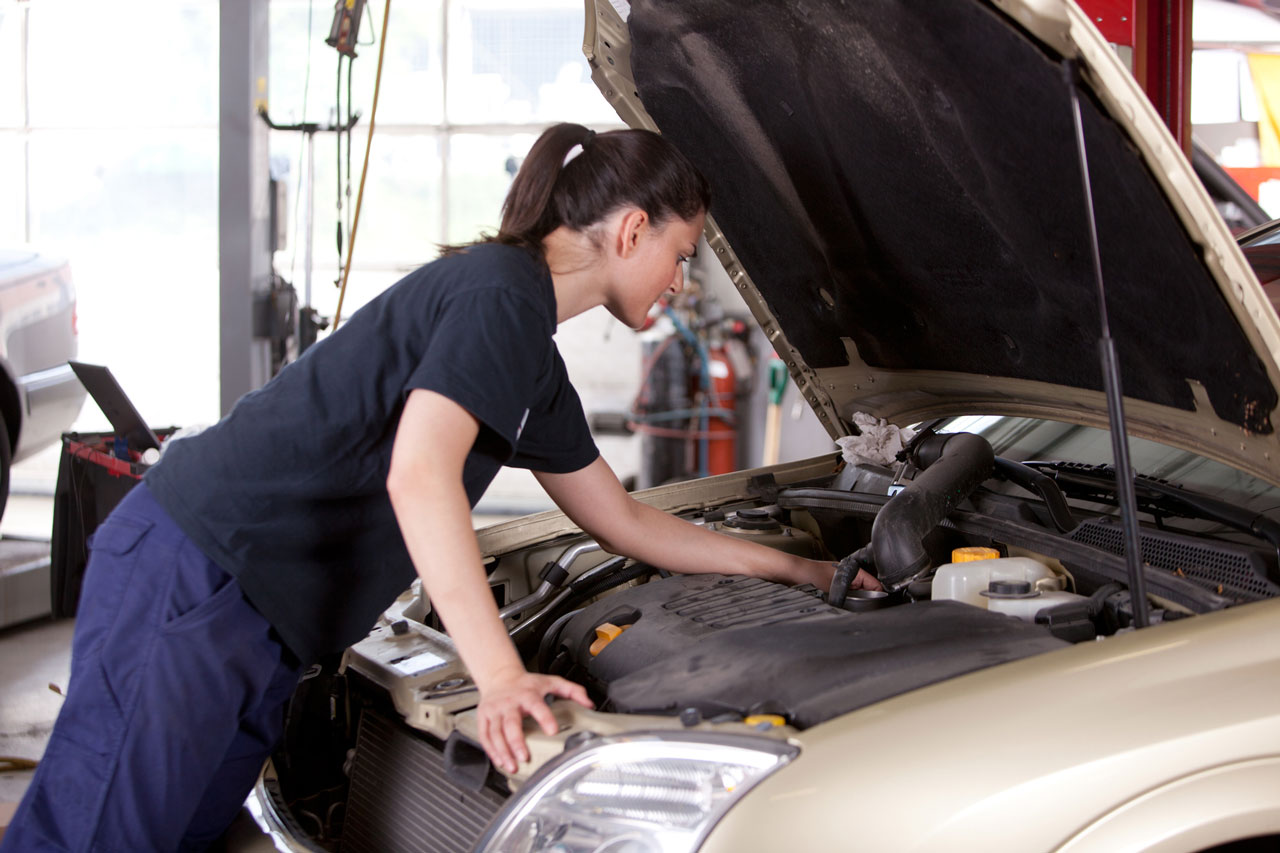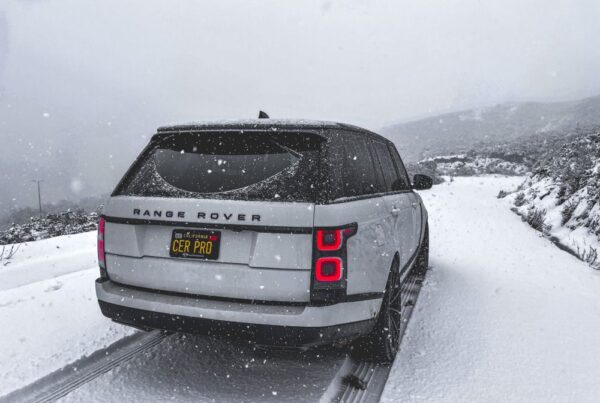As this topsy-turvy 2020 enters the final stretch on the calendar, our cars, trucks, and SUVs will continue to roll down the roads. When the month of October hits – outdoor temperatures and driving conditions begin to rapidly change across North America. To reduce possible breakdowns, it’s important to follow recommended fall car care service.
Here is the main problem – weather conditions are unique across North America. While a car owner in San Diego might deal with Santa Ana winds and minor temperature drops, a guy in Lincoln, Nebraska with the same vehicle is considering if it’s time to install those snow or winter tires.
Automotive maintenance is indeed a geographic-specific program. Cold and extreme heat can play havoc on exposed and high-use components and systems – such as suspension parts, the cooling unit, and lubricants. As such, it’s important to fine-tune your car service program to match the changing weather conditions unique to your location.
In today’s blog, we are going to go over all of the details related to car care; in particular, we will discuss the things that every car owner should check to see if they need to be repaired or replaced – regardless of weather, temperatures, or your location. But we’ll also provide a few specific points of concern – which should keep your car running strong during the fall and approaching winter months. By following these guidelines, you can significantly reduce the potential of expensive auto repair.
Why It’s Important to Stay on Top of Car Service
Did you know that there is fine-print in every factory-backed new car warranty? In a follow-up, did you know that water is wet – that the sun is hot – and that ice is cold? Sorry for the sarcasm, but that fine print in new or certified used car warranties tends to be skipped over during the purchase process.
That can cost you thousands of dollars in repairs. Let me explain. Nearly every warranty with a consumer vehicle is only backed when the car owner follows the manufacturers recommended service and maintenance – for that specific year, make, and model of vehicle. This will vary based on each manufacturer and can be different for individual dealerships.
However, if this maintenance calendar is skipped, or even compromised by using inferior replacement parts (even those that are good – but not recommended) – warranty claims can be denied.
During the summertime, it’s common for car owners to be more laid back with their car care – even though this is the time of year where more people drive extended miles. It’s due to that fact, that getting back on the scheduled service train with fall car care is even more important.
The Impact of Summer on Car Paint
Between the months of June and September, much of the U.S experiences aggressive rainstorms and thunderstorms, especially in the tropical regions due to the combination of moisture from the Gulf of Mexico and the Pacific Ocean. But it’s also hotter than any other season – with UV rays being focused on non-protective paint. This is when the potential for extensive wear and tear becomes relevant.
When there is more rainfall, drivers’ windshield wipers are used more, tires must have good traction, and brakes must be effective to avoid running into your tires locking up or potential car accidents. When there is more moisture in the air, however, many parts of your car tend to wear out much faster, such as the alternator, AC belts, steering pump belts, and cooling system.
As fall approaches, temperatures begin to drop lower – especially at night and early in the morning – which leads to the problem of low tire pressure. These problems associated with summer weather, as well as the upcoming threat from extreme winter weather, makes fall the perfect time to take care of all necessary car care.
With all that said – let’s introduce the top 10 items you should be checking in the fall months.
#1 – Pay Attention to that Check Engine Light Indicator
Your check engine light lights up whenever a sensor in the diagnostics system (OBD-II) indicates there is a potential failure or problem. The OBD-II warning corresponds to a code that a professional car owner or mechanic can scan to find out more information.
Usually your check engine light will come online due to sensors or wiring harnesses simply being poorly connected or worn out, which means your light being on could be a false call. Regardless, it is still important to take the warning seriously to avoid any potentially important mechanical problems.
If you see your warning indicator or check engine light is on, here are some tips to keep in mind:
- If you have an OBD-II code scanner, plug it in and download the warning code.
- Cross-reference the OBD-II code with your vehicle’s service manual. Contact your local dealership or check online for the service manual if you don’t have one.
- Determine the trouble code’s root source and inspect the wiring harness and sensor. If the wiring harness is damaged, frayed, or loose or the sensor looks old, replace both. After this, clear the codes and try again.
If the same code comes up again or if you don’t have your own OBD-II scanner, you’ll want to take your car to a professional mechanic as soon as possible.
#2 – Have the Brakes Inspected
The brakes are one of the most important parts of your car and should be serviced however and whenever the manufacturer of your vehicle recommends, no matter what. If you see warning signs that your brakes might fail, you are putting yourself and others in danger and should get them repaired or replaced as soon as possible.
However, as roads get colder and traction is reduced, the need for good brakes becomes even more important. A modern brake system is an Anti-Lock unit. One of the factors that allows the brakes to apply gradually is reduced build-up of brake dust on pads, rotors, and calipers. The simple act of having your brakes inspected, cleaned, and brake dust removed can make a big difference in their performance.
#3 – Have the Front-End Suspension Inspected or Aligned
Another problem caused by the heavier rainfall and wind in the summer is the creation of potholes in the road. Whenever your wheel hits a pothole, there is a chance you might pop a tire, bend a wheel, the rear or front end suspension might become misaligned, and there is more wear and tear applied to your suspension components which might cause them to loosen and eventually fall out of their correct alignment.
If your car’s suspension falls out of alignment, it can be realigned by a professional mechanic. However, in most cases, this is an indication that there has been quite a bit of wear and tear on components fastened to the suspension, chassis, or steering system and the bushings, which means you might have to replace many of these components.
#4 through 10 – Additional Fall Service Recommendations
Here are some more important safety and operational parts of your car you should service and/or replace to prepare for the harsh winter weather to come:
Replace Wiper Blades. With snowfall incoming, you’ll have to use wiper blades frequently to handle not only snow but ice as well.
Change the Oil. It’s important to replace your engine’s oil as often as is recommended by the manufacturer. In the fall, there are often many promotions and discounts to look out for – especially oil changes at car dealerships.
Flush Your Vehicle’s Coolant System. It might seem counter-intuitive to flush your coolant system right before the temperature will drop anyway, but the point of this is to eliminate all of the sludge that might have built up throughout the system, including the heater core which will be important in the winter.
Replace the Battery. While you should be replacing your car’s battery as often as is recommended by the manufacturer anyway, it is always a good idea to replace before the winter season hits, as low temperatures make it harder for batteries to start your car’s engine.
Repair or Add Protection to the Windshield. With regards to your windshield, you first want to check if there are any cracks and repair them first. Next, we would recommend applying a protective layer of ceramic coating, since it’s hydrophobic properties will allow it to repel water and help your windshield blades slide easier.
Change Tires if Needed. The best way to tell if it’s time to replace your tires is if your DOT number is higher than 5 years or if the depth of your tread is under 3/32”. If your car has all-season tires, you must replace them in pairs if your car is front or rear-wheel drive and you must replace all of them if your car is 4-wheel drive. Staying on top of tire wear can reduce accidents due to a blown tire.
Some other things worth doing are having a professional mechanic complete a wheel alignment and check your steering system, brake linings, and warning light indicators. If you had the engine oil changed within 1,000 or 2,000 miles of your scheduled fall service appointments, have the engine oil replaced as recommended by your specific manufacturer.
Also, if you notice a rattling sound under your hood or your car, that might be a sign of a potential exhaust leak. That’s something you should have looked into and repaired before it completely breaks.
How Fall Impacts Your Car’s Paint
One important thing to keep in mind with regards to Fall is that leaves start to fall, which means leaves will fall onto your car. While most leaves won’t cause any damage to your car’s paint directly, the problem is when rain causes leaves to stick to your car’s surface and it starts eating away at the clear coat.
Leaves contain pollen, tree sap, and acids, all of which are contaminants that start to decompose and eat away at your clear coat when plastered to your car’s paint surface, causing stains.
How to Protect Your Car All Year Long
To protect your car from fall weather and incoming winter weather, all moving parts that eventually wear out should be replaced based on when the manufacturer recommends. Being proactive about preventative maintenance can save you money, reduce major repairs, and keep your ride running strong. Nearly everything else on the inside and out, however, can be protected by a professional-grade ceramic coating.
Ceramic Pro 9H offers a slew of customized formulations for different materials such as glass, automotive paint, carbon fiber, wheels, vinyl, and paint protection film. This is the highest grade of nano ceramic coating on the market and is only applied by professional auto salons and detailers.
There are many benefits to applying a ceramic coating. Since it is hydrophobic, it repels water and makes it more difficult for things like bug splatter, bird droppings, tree sap, leaves, etc. to stick to it. It also protects against road grime, dirt, salt, and even ice build-up from snow.
This makes installing a ceramic coating a proactive and smart decision – as it can protect your vehicle from the upcoming harsh winter weather – and hold up for multiple summers as well. If you’d like to learn more about Ceramic Pro 9H coatings, click the button below.








